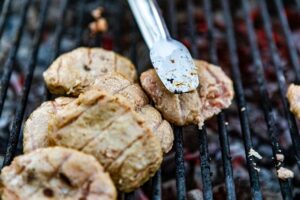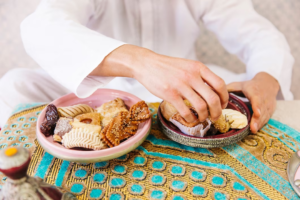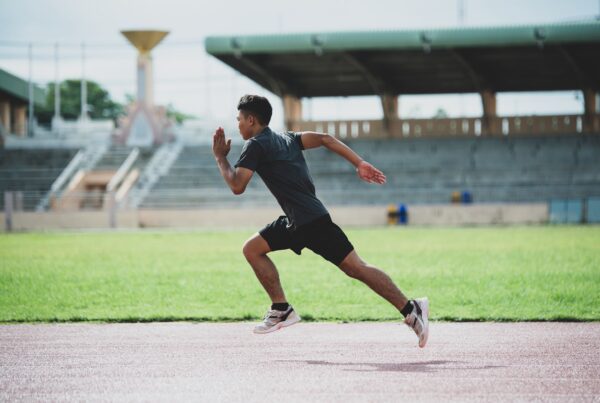Ramadan is a month of fasting observed by Muslims worldwide. During this time, Muslims abstain from food and drink from dawn until dusk. Depending on the location, the fasting period can last up to 15 hours.
With such a lengthy fasting period, it can be challenging to maintain muscle mass during Ramadan. However, with a few tips and tricks, it is possible to retain your muscle mass even during this fasting period.

Plan Your Workouts Wisely
Strengthening exercises are essential to maintain muscle mass during Ramadan. However, it is recommended to decrease the volume and intensity of your workouts during the first week of Ramadan. This allows your body to adapt to the fasting routine and helps prevent injury.
It’s important to note that working out in a fasted state may not be the best option for your body. It can be tough on your body’s homeostasis, especially if you’re already dehydrated. You definitely don’t want to risk passing out in the gym.
When it comes to fitting in workouts during Ramadan, it can be challenging to find the right time that works for you. However, you may try scheduling your workouts between Maghrib (sunset) and Isha (night) prayers, or after Isha prayers at night. Another alternative is to work out right before Sahur in the morning.
Listen to your body and see how it responds to working out at different times of the day.

Keep Track of Your Protein Intake
You must be familiar with the role of protein in your diet, which is essential for muscle growth and repair. During Ramadan, it is essential to keep track of enough protein to maintain muscle mass. Consuming enough protein helps in muscle recovery and prevents muscle loss.
Include protein-rich foods during meals in Sahur and Iftar, such as chicken, beef, fish, eggs, dairy products, and legumes. It is recommended to consume protein-rich foods during the evening meal and before the pre-dawn meal.
In addition to preserving muscle mass, consuming a high-protein meal n has been shown to reduce hunger. This may help you stay focused throughout the day by reducing your food cravings.
Studies have demonstrated that protein is more filling than carbohydrates or fats. Additionally, protein has a high thermic effect, meaning that the body burns more calories during the digestion and absorption of protein compared to carbohydrates and fats.

Don’t Lose Control Of Your Calorie Intake
During the month of Ramadan, it’s important to be mindful of your eating habits. Although fasting for long hours without food and water can be challenging, it’s easy to fall into the trap of overeating during the night.
This is because the Ramadan bazaar is filled with a wide variety of high-calorie foods that are readily available just around the corner. From Murtabak to Ayam Percik, the options are endless and tempting.
To avoid overindulging, try to stick to your pre-Ramadan diet and keep track of your calories as much as possible. This can help you maintain a healthy eating habit and make it easier to return to your routine and diet once Ramadan is over.
What Happens to Your Body During Cyclic Overeating

Keep Hydration in Check
During Ramadan, it is crucial to maintain proper hydration levels throughout the day to avoid dehydration. Although you may be tempted to drink a lot of water all at once, it is essential to avoid this, as it can cause bloating and discomfort. Instead, try drinking small amounts of water throughout the night to replenish fluids lost during the day.
In addition to water, consider incorporating hydrating fluids such as coconut water or sports drinks to maintain optimal hydration levels. You can also consider incorporating more fruits and vegetables (foods with high water content) into your diet during the night to keep you hydrated.
Additionally, dehydration can lead to reduced blood flow and muscle weakness, so it is essential to stay hydrated to maintain your physical strength and performance during workouts after “berbuka puasa”.

Keep An Eye On Your Muscle Mass during Ramadan fasting
Retaining muscle mass is challenging during fasting, so it is important to have a good understanding of the muscle mass you already have. Tracking changes in your muscle mass throughout the month can help you make adjustments to your diet and exercise routine to ensure that you are maintaining your muscle mass. This is where a body composition analysis comes into play.
By analyzing your body composition, you can get a better understanding of your Skeletal Muscle Mass, Percent Body Fat, and other important metrics. Armed with this information, you can make more informed decisions about your diet and exercise routine during Ramadan to stay intact with your gains.
How often should you test body composition?
Start tracking your progress with an InBody machine today and see the difference it can make. Find the nearest location for an InBody test here.
Conclusion
Maintaining muscle mass during Ramadan fasting can be challenging, but it is possible with a few tips and tricks. Consuming enough protein, staying hydrated, and exercising with a flexible routine during the non-fasting hours can help retain muscle mass during this period.
Remember to consult with your doctor before making any dietary or exercise changes during Ramadan if you have any medical condition. With the right approach, you can maintain your muscle mass and stay healthy during Ramadan fasting.











